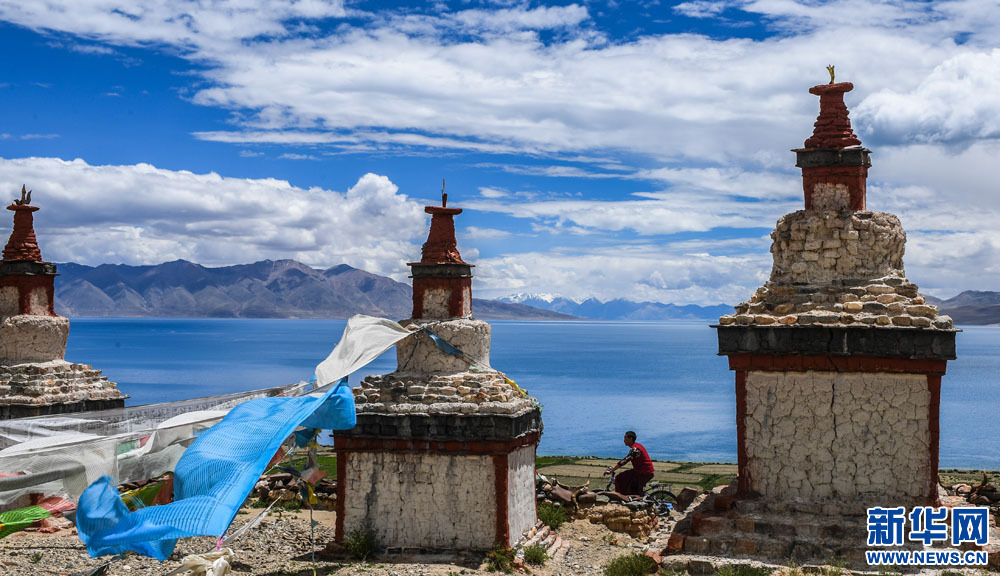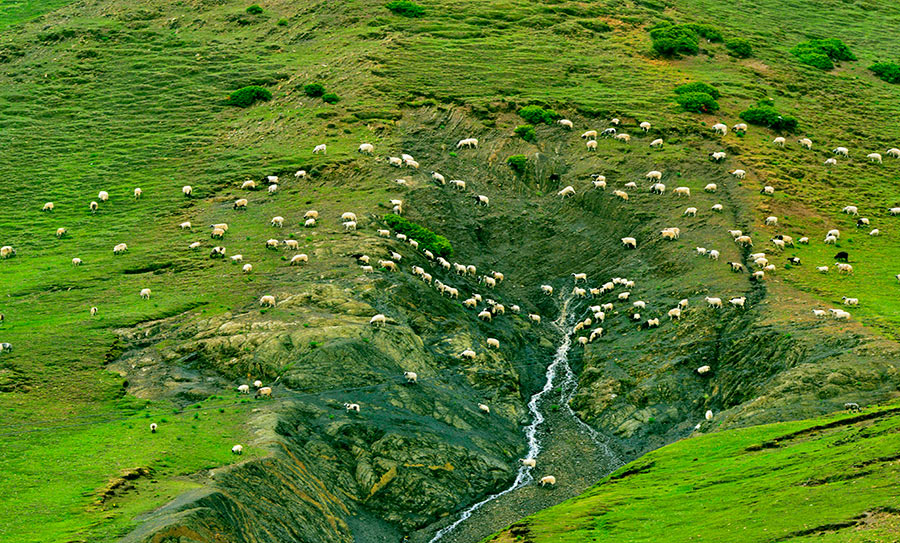Tibet hit by wave of festival celebrations
During July, while the rest of the country is roasting in the heat, southwest China's Tibet, with white clouds and blue sky, is particularly cool.
In Nyingchi, Shigatse, Lhoka, and other places, the festival season has begun. People can gaze at the beautiful natural scenery, taste local special foods, and experience unique folk customs.
On July 21, the Lulang International Tourism Town opened its first weeklong Stone Pot Mushroom Food Festival, which includes exciting programs such as a Lulang Mushroom King contest.
On July 22, Gyantse County in Shigatse Prefecture will hold its annual Gyantse Damar Festival (also known as the Gyantse Horse Racing Festival). The Damar Festival, a traditional festival in Gyantse, has been around for more than 600 years. Today, the festival has become a collection of cultural performances, sporting events, trade negotiations, and travelling and leisure activities.
From July 27 to August 1, the first Kulha Kangri Camping Event, sponsored by the Lhozhag County Tourism Bureau, will be held at a campsite in Lhozhag County, Lhoka Prefecture. The campsite is located at the foot of six 7,000-meter snow mountains at an altitude of 4,550 meters. The snow mountains, which look like a barrier of snow and ice, are reflected in the lake. What a wonderful sight! After nightfall, it becomes apparent that the stargazing is definitely good here.
On August 8, the Horse Racing Festival in Damxung County, a state-level intangible cultural heritage arrives. The azure-blue Namtso Lake, green Damxung grasslands, galloping horses, and bold nomads make picturesque scene here.
From August 21 to 27, the weeklong Lhasa Shotun Festival will be held. People will eat yoghurt, watch Tibetan opera performances, hold picnics in the park, and view the unveiling of giant thangkas.
Your Comment
Name E-mailRelated News
-
;
-
-

-
Tibet strives to make culture its pillar industry by 2020
Tibet autonomous region has decided to make culture one of the region's pillar industries by the end of 2020, according to a press release of the region's cultural department on Thursday.
-
-
-
Environment of reserve improved for black-necked cranes in China's Tibet
A black-necked crane looks after its chicks after they hatched in the Qiangtang nature reserve, southwest China's Tibet Autonomous Region, June 24, 2017. Flocks of black-necked cranes fly here to breed as the environment of reserve has been improved in recent year
-
-
-

-
Taking the high road in Tibet
The Sichuan-Tibet highway passes through mountains more than 4,500 meters above sea level and offers stunning views of snowy peaks, grasslands, valleys and rivers.
-
Based in Lhasa, Tibet Vista is a Tibet travel agency that specialized in Tibet permit, and Tibet tours for both private and group travelers at a local price!
•4 Days Lhasa City Group Tour from USD 460 •8 Days Everest Base Camp Group Tour from USD 850 •15 Days Mt.Kailash Group Tour from USD 1780 •2016 Tibet Train Tours from Beijing, Shanghai, Chengdu, Xining,etc










